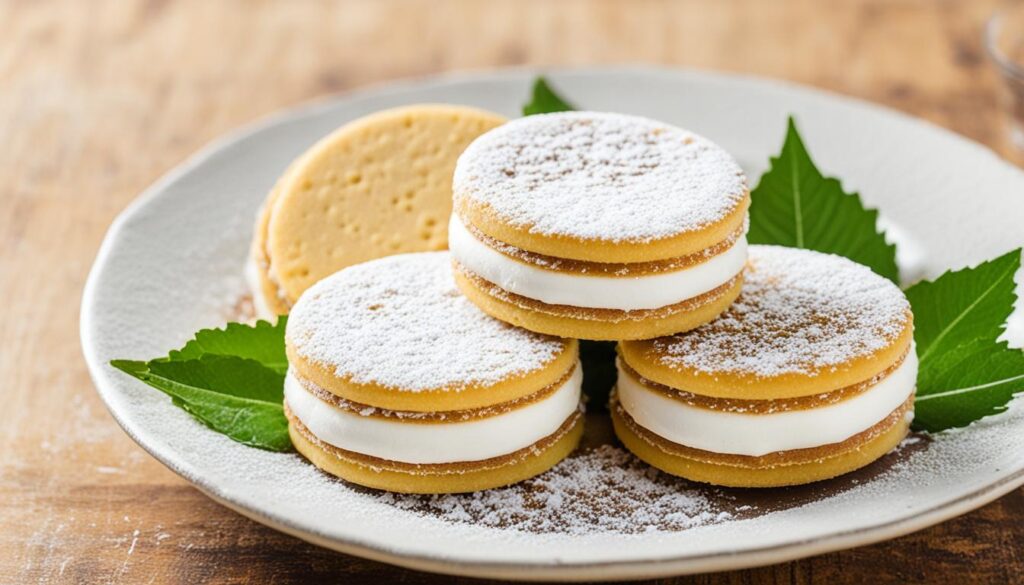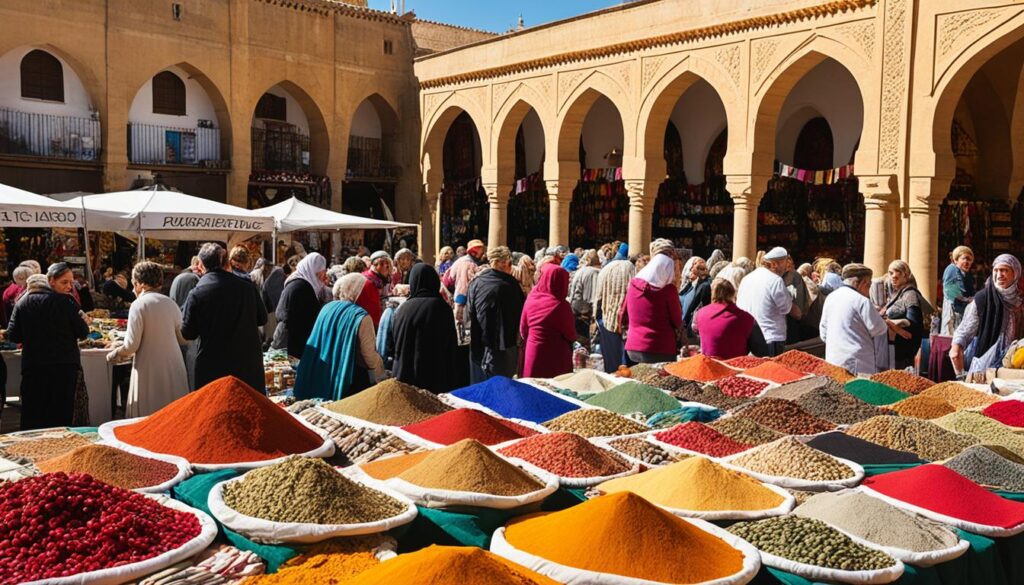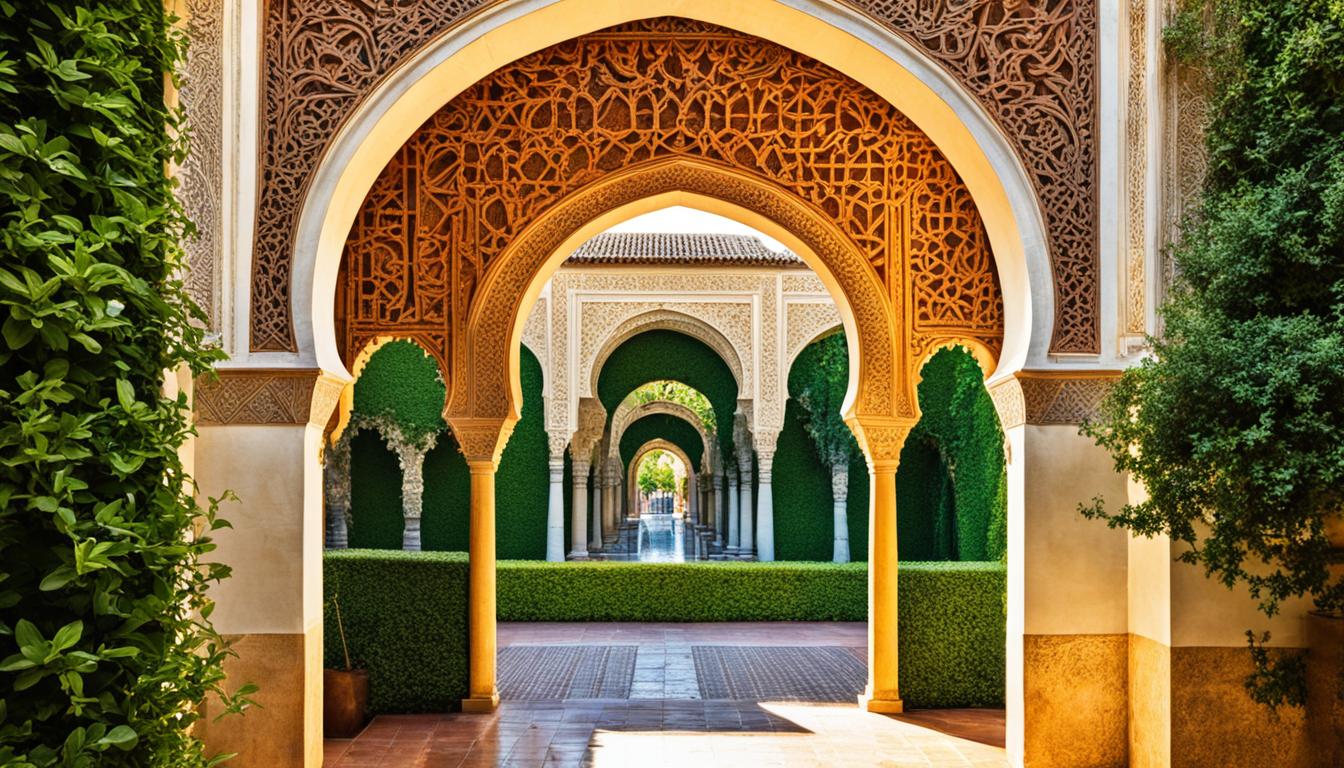Cordoba, Spain, is a city full of history and culture. It has a history that goes back over two thousand years. The city is known for its beautiful Moorish architecture and lively Andalusian traditions.
At the center of the city is the Mezquita. This place is a mix of Islamic and Christian styles. It shows the city’s rich past.
Cordoba is also famous for its historic charm, festivals, and food. If you want to really feel Spain’s culture, this is the place to go.
Key Takeaways
- Cordoba, Spain is a city with a rich cultural heritage spanning over 2,000 years.
- The city is renowned for its Moorish architecture, including the iconic Mezquita cathedral.
- Cordoba’s Andalusian traditions and vibrant festivals are a major draw for visitors.
- The city’s historic charm and multicultural past make it a unique and immersive destination.
- Cordoba’s culinary delights, such as Salmorejo and Rabo de Toro, are also highlights of the city.
The Historic Charm of Cordoba’s Old Town
In the heart of Andalusia, Cordoba’s old town is a maze of narrow streets and stunning architecture. It shows off the city’s Moorish past. The UNESCO World Heritage Site is full of medieval buildings. These streets and landmarks tell the story of a city rich in history.
Exploring the Winding Streets and Architectural Marvels
Walking through the old town, you’ll see Moorish architecture everywhere. The historic center is lively, filled with tourists and locals, especially school groups. You can spend a day here, visiting famous spots like the Roman Bridge. This bridge is a symbol of the city’s history and innovation.
The Mezquita: A Blend of Islamic and Christian Architecture
The Mezquita cathedral is a highlight of the old town. It was a mosque during the Moorish rule and a cathedral after the Christian takeover in 1236. Its design, with big arches and intricate details, shows Cordoba’s diverse culture.
Cordoba’s old town is perfect for those who love art and history. It’s a place where Moorish and Christian cultures meet in architecture.
“Cordoba was considered the largest city in Europe, if not the world, around the 10th century.”
Cordoba’s Vibrant Festivals and Traditions
Cordoba, a city in southern Spain, is famous for its lively festivals and cultural traditions. The “Battle of Flowers” is a key event, happening every May. It welcomes spring with a colorful parade full of Andalusian charm.
The Battle of Flowers: A Colorful Celebration of Spring
The “Batalla de Flores,” or Battle of Flowers, is a cherished tradition in Cordoba. It has been bringing joy to locals and visitors for many years. People dressed in traditional Andalusian clothes parade, throwing flowers at each other. This celebration fills the air with the sweet smell of flowers and the spirit of the season.
This event is more than a parade. It shows Cordoba’s love for life and its bond with nature. Starting in the 19th century, it was a way for the wealthy to show off. Now, it’s a celebration that unites the whole community, with people of all ages joining in.
The Battle of Flowers is a colorful and memorable event. It gives a glimpse into Cordoba’s cultural heritage. It’s a celebration of the Andalusian spirit, showing their traditions to the world.
| Festival | Date | Description |
|---|---|---|
| Cata del Vino Montilla-Moriles | April 17-21, 2013 | Annual wine tasting festival in Cordoba |
| Las Cruces de Mayo | May 1-5, 2013 | Festival celebrating the crosses of May in Cordoba |
| Los Patios | May 8-19, 2013 | Annual flower patios competition in Cordoba |
| La Feria | May 25-1, 2013 | Traditional fair and bullfights in Cordoba |
Cordoba’s festivals and traditions show its deep cultural roots and connection to nature. From the Battle of Flowers to the beautiful flower patios and the art of Cordoban sandals, the city offers a peek into Andalusian culture.
The Beauty of Cordoban Patios
Cordoba, a city in southern Spain, is famous for its beautiful Cordoban patios, or inner courtyards. These peaceful spaces are a key part of the city’s history. They offer a calm break from the busy streets. With their colorful flowers, greenery, and detailed designs, the patios welcome visitors with open arms.
La Feria de los Patios: A Showcase of Stunning Courtyards
Every year, Cordoba celebrates its traditional courtyards at the La Feria de los Patios festival. During this event, people open their private patios to the public. It lets visitors see the creativity and skill that have been passed down for years. The festival, named a UNESCO World Intangible Cultural Heritage Site in 2012, is a cherished tradition. It highlights Cordoba’s deep cultural roots.
The patios show the creativity of Cordoba’s people. They’ve adapted to the local climate to create spaces that bring people together. With over 50 patios joining the festival, visitors can dive into the beauty and history of these architectural wonders.
“The Cordoban Patios Festival was declared a World Heritage Site in 2012, recognizing the cultural significance of these stunning courtyards.”
The historic center of Cordoba is a UNESCO World Heritage Site. This makes the city’s Cordoban patios and their annual festival a top spot for travelers. They offer a true taste of Andalusian culture and tradition.
Cordoba’s Culinary Delights
Cordoba is famous for its rich culture and tasty food. It’s known for the “alfajores,” a sweet pastry. These treats mix almonds, honey, and cinnamon. Each baker puts their own spin on the recipe.
The alfajores are sweet and crumbly with a warm spice smell. They’re loved by locals and visitors. Eating these Andalusian gastronomy sweets lets you taste Cordoba’s food history and its deep connection to Cordoban cuisine.
Savoring the Sweet History of Alfajores
The traditional sweets go back to when Cordoba was ruled by the Moors. This was a time of great art, culture, and science. The city’s food was influenced by many cultures, mixing Andalusian gastronomy with Middle Eastern flavors.
Today, Cordoba’s alfajores still delight people. They show the city’s rich Cordoban cuisine and its love for its food heritage. Enjoying these traditional sweets is a tasty way to experience Cordoba’s lively and flavorful history.

“Savoring the rich history and flavors of Cordoba’s alfajores is like taking a delicious journey through the city’s culinary past.”
Cordoba Spain Culture: Embracing Flamenco
Flamenco music and dance are key parts of Cordoba’s culture. This style, from the Romani gypsies, has shaped the city’s heritage for ages. It blends Spanish, African, and Middle Eastern tunes, known for its lively beat, soulful singing, and stunning dance.
Visiting Cordoba means diving into the flamenco culture. You can see live shows in bars or big festivals. This lets you feel the city’s deep cultural heritage and its link to Andalusian life.
Flamenco has many styles, each with its own beat and mood. From the strong seguiriya to the fun bulerías, Cordoba’s Andalusian music and traditional dance move people with their emotion and skill. Places like Tablao El Cardenal offer real flamenco, mixing music with food.
“Flamenco is not just a dance or a song, but a way of life. It is the expression of the soul, the heartbeat of Andalusia.”
Cordoba’s love for flamenco shows its deep history and traditions. It invites visitors to feel the soul of Flamenco culture and celebrate Andalusian spirit.
| Key Flamenco Styles in Cordoba | Characteristics |
|---|---|
| Seguiriya | Powerful, somber, and introspective |
| Tangos | Lively, energetic, and often accompanied by percussive footwork |
| Soleá | Melancholic, emotional, and deeply expressive |
| Bulerías | Upbeat, rhythmic, and perfect for improvisational dance |
Uncovering Cordoba’s Multicultural Heritage
Cordoba’s culture is a mix of many civilizations over the years. It has been touched by Romans, Muslims, and Christians. Each group added to the city’s look and history.
Roman, Visigoth, Islamic, and Jewish Influences
The city’s center shows off its rich history. You can walk through the Jewish quarter and see the Mezquita’s beautiful Moorish design. You’ll also find a mix of styles in the parish churches and civic buildings.
The Mezquita, or Mosque-Cathedral, is a key spot in Cordoba’s multicultural history. Built from 784 C.E. to 987 C.E., it became a church in 1236 C.E. Then, in 1523 C.E., a cathedral nave was added, blending Islamic heritage and Roman architecture.
Exploring Cordoba lets you dive deep into its complex history. From the Jewish quarter to the Mezquita, each part of the city tells a story. It shows how Cordoba’s past has shaped its present.

“Cordoba provides a fascinating glimpse into the city’s diverse cultural influences, inviting visitors to explore its rich history and vibrant present.”
The Art of Cordoban Sandals
Cordoba, a city in Spain, is famous for its “Cordoban sandals.” These sandals are made by skilled artisans over many generations. They show the city’s rich culture. The making of these sandals is a special tradition.
Artisans pick the best leathers and use old techniques to cut and stitch them. This makes a strong and stylish sandal. Whether you want something simple or fancy, Cordoban sandals are a great choice. They are a true piece of the city’s culture.
Visiting the places where these sandals are made lets you see Cordoba’s love for its traditions. Every step in making the sandals is an art. They show Cordoba’s commitment to Cordoban sandals, traditional craftsmanship, leather goods, and artisanal products.
Handcrafted Tradition and Style
Making Cordoban sandals is a way to honor Cordoba’s culture. Skilled people have passed down their skills for many years. They pick the best leathers and use old techniques to make the sandals.
These sandals are not just for everyday use. They are a special souvenir that shows off Cordoba’s traditions. By visiting places where they are sold, you can see Cordoba’s dedication to keeping its traditions alive.
“The art of the Cordoban is a true testament to the city’s rich cultural heritage, where skilled craftspeople have honed their skills over generations to create these distinctive and durable sandals.”
| Characteristic | Description |
|---|---|
| Materials | Goat or lamb leather (badana), specialized tools for working the leather, penetrating dyes, silver or gold leaf, and other traditional materials. |
| Clientele | Men and women over 40 years of age seeking differentiated and exclusive products, as well as companies looking for special gifts. |
| History | The art of the Cordoban dates back to the Hispanic-Muslim era and was maintained until the 18th century, being a high-quality and aesthetically pleasing artisanal technique. |
| Innovation | The company has focused on creating an online store to reach a global market and using a comprehensive management program to improve efficiency. |
Quirky Museums and Offbeat Attractions
Cordoba is a vibrant city in southern Spain known for its quirky museums and offbeat attractions. These places give visitors a unique look into the city’s rich history. They show the fun and unexpected sides of Cordoba’s traditions.
The Museum of Julio Romero de Torres is a must-see. It honors the famous Cordoban painter. Here, visitors can dive into the artist’s style and the culture that inspired him. For those interested in leather work and ancient coins, the Museo del Guadamecí y Antiguas Monedas is perfect.
The Museo Taurino is great for fans of bullfighting. It offers a deep look into this important part of Cordoba’s culture. These museums let visitors see Cordoba from a new angle.
Cordoba also has unique experiences like the peaceful Embalse de La Breña reservoir. And the beautiful Huerta del Rey in the Sierra de Hornachuelos Natural Park. These spots are perfect for escaping the crowds and enjoying nature.
Exploring Cordoba’s quirky museums and offbeat attractions reveals the city’s hidden treasures. It’s a chance to see beyond the famous sights and discover Cordoba’s unique culture and surprises.
| Museum | Highlights | Admission Fee |
|---|---|---|
| Museum of Julio Romero de Torres | Interactive exhibits celebrating the renowned Cordoban painter | Varies |
| Museo del Guadamecí y Antiguas Monedas | Explores the history of leather craftsmanship and ancient coinage | 3€ |
| Museo Taurino | Delves into Cordoba’s longstanding bullfighting tradition | 4€ |
“Cordoba’s quirky museums and offbeat attractions offer a glimpse into the city’s cultural depths, going beyond the famous landmarks to uncover its truly fascinating heritage.”
Conclusion
Cordoba, Spain, is a city that pulls you into its deep cultural roots and Andalusian traditions. You’ll find the Mezquita, a mix of Islamic and Christian styles, and beautiful patios. There are also handcrafted sandals that show off Spain’s lasting culture.
Experience the lively flamenco, taste the sweet alfajores, or learn about the city’s diverse history. Cordoba is a place that deeply touches those looking for a meaningful trip. By wandering the old town’s streets, visiting unique museums, and joining in festivals, you’ll get to know Cordoba’s rich cultural heritage.
The Cordoba Spain culture, Andalusian traditions, and many immersive experiences make it a top spot for exploring Spain’s heart and soul. Whether you’re into architecture, food, or celebrations, Cordoba will surely impress you.

